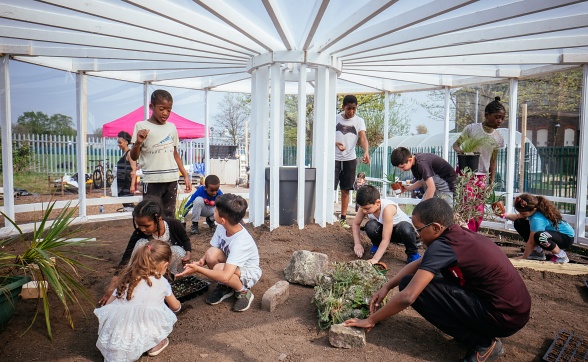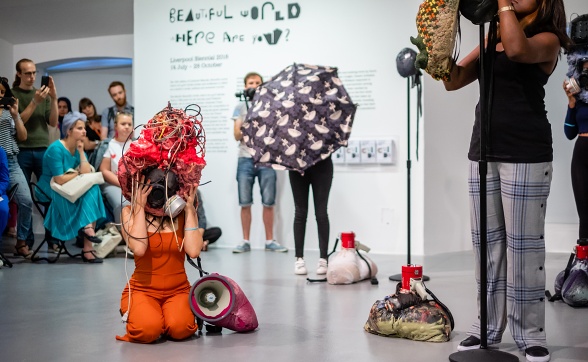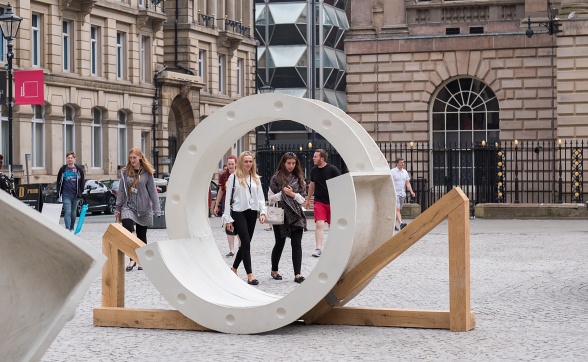Broader and More Diverse: New Report on Liverpool Biennial’s Impact Released

Mohamed Bourouissa, Resilience Garden, 2018. Granby Gardening Club workshop, April 2018. Photo: Pete Carr

Kevin Beasley, Your face is/is not enough, 2018. Performance at Tate Liverpool, 14 July 2018. Image courtesy the artist and Casey Kaplan, New York. Photo: Pete Carr

Holly Hendry, Cenotaph, 2018. Installation view at Exchange Flags. Photo: Pete Carr
Mohamed Bourouissa, Resilience Garden, 2018. Granby Gardening Club workshop, April 2018. Photo: Pete Carr
Independent research released today reveals a growing impact, broader demographic and increased visitor satisfaction with the programme of Liverpool Biennial in 2018.
Among the key findings from the research carried out by BOP Consulting are:
- The 10th edition attracted 160,730 visitors – an increase of 47% compared to 2016 – who made over 660,000 visits. More than half were first-time attendees.
- The Biennial continues to play an important role in Liverpool’s status as a world-leading cultural destination. 50% of visitors in 2018 came from outside the North West of England, including 14% international visitors.
- Audiences were more diverse and younger – 11.2% described their ethnicity as non-White and 38% of visitors were aged under 30, compared to 30% in 2016.
- Research showed a high level of engagement and satisfaction with the 2018 programme. Over 90% of attendees rated their experience as good or very good and findings also showed that the Biennial has a clear socially-focused role.
- In addition to its social role, the 2018 Biennial also had an economic benefit to the city and region, with a total net contribution to the Liverpool economy of £6.6 million, the equivalent to 198 permanent full-time jobs.
- Overall, the research recognised Liverpool Biennial as having both strong international recognition and local relevance, which contributes to its overall quality.
The 10th Liverpool Biennial, Beautiful world, where are you? curated by Kitty Scott and Sally Tallant with the Biennial team, ran for fifteen weeks from 14 July to 28 October 2018 in venues and public spaces throughout the city. These included Tate Liverpool, Bluecoat, FACT, Open Eye Gallery and St George’s Hall, as well as outdoor locations across the city. More than 40 artists from 22 countries participated in the programme in 2018, making Liverpool Biennial the largest festival of contemporary visual art in the UK.
Kathleen Soriano, Chair of Liverpool Biennial, welcomed the new report: "This new report proves the power of Liverpool Biennial to reach beyond the established boundaries for engagement with contemporary art, and demonstrates the Biennial’s role in defining Liverpool as one of the great cultural cities of Europe. We are moving forward with our plans for 2020, as Fatos Üstek takes up her role as Director in May, starting an exciting new chapter in the history of the Biennial."
You can read the full report here.